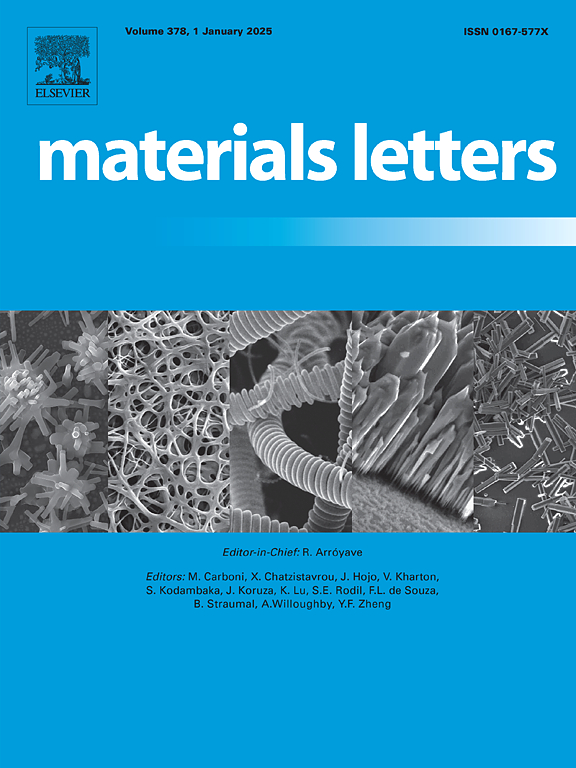Physical properties of copper-doped molybdenum oxides for monocrystalline silicon solar cell applications
IF 2.7
4区 材料科学
Q3 MATERIALS SCIENCE, MULTIDISCIPLINARY
引用次数: 0
Abstract
Mo0.29Cu0.01O0.70 exhibited a bandgap of 2.9 eV, a work function of 4.46 eV, and an energy level difference (EF-EV) of 0.97 eV. The study demonstrated that doping copper into molybdenum oxides (MoxCuyOz) in monocrystalline silicon solar cells (MSCs) increased the conversion efficiency from 20.5 % to 21.1 %. Additionally, the fixed oxide charge (Qf) of Mo0.29Cu0.01O0.70 was −3.5 x 1013 cm−2, which improved the back surface field. The proposed MoxCuyOz shows greater external quantum efficiency (EQE) enhancement than undoped MoOx, consistent with the improved Qf of MoxCuyOz.
单晶硅太阳能电池用掺铜钼氧化物的物理性质
mo0.29 cu0.010 o0.70的带隙为2.9 eV,功函数为4.46 eV,能级差为0.97 eV。研究表明,在单晶硅太阳能电池(MSCs)中,将铜掺杂到钼氧化物(MoxCuyOz)中可以将转换效率从20.5%提高到21.1%。此外,mo0.29 cu0.010 o0.70的固定氧化物电荷(Qf)为−3.5 x 1013 cm−2,改善了后表面场。与未掺杂的MoOx相比,MoxCuyOz的外量子效率(EQE)有更大的提高,这与MoxCuyOz的Qf提高一致。
本文章由计算机程序翻译,如有差异,请以英文原文为准。
求助全文
约1分钟内获得全文
求助全文
来源期刊

Materials Letters
工程技术-材料科学:综合
CiteScore
5.60
自引率
3.30%
发文量
1948
审稿时长
50 days
期刊介绍:
Materials Letters has an open access mirror journal Materials Letters: X, sharing the same aims and scope, editorial team, submission system and rigorous peer review.
Materials Letters is dedicated to publishing novel, cutting edge reports of broad interest to the materials community. The journal provides a forum for materials scientists and engineers, physicists, and chemists to rapidly communicate on the most important topics in the field of materials.
Contributions include, but are not limited to, a variety of topics such as:
• Materials - Metals and alloys, amorphous solids, ceramics, composites, polymers, semiconductors
• Applications - Structural, opto-electronic, magnetic, medical, MEMS, sensors, smart
• Characterization - Analytical, microscopy, scanning probes, nanoscopic, optical, electrical, magnetic, acoustic, spectroscopic, diffraction
• Novel Materials - Micro and nanostructures (nanowires, nanotubes, nanoparticles), nanocomposites, thin films, superlattices, quantum dots.
• Processing - Crystal growth, thin film processing, sol-gel processing, mechanical processing, assembly, nanocrystalline processing.
• Properties - Mechanical, magnetic, optical, electrical, ferroelectric, thermal, interfacial, transport, thermodynamic
• Synthesis - Quenching, solid state, solidification, solution synthesis, vapor deposition, high pressure, explosive
 求助内容:
求助内容: 应助结果提醒方式:
应助结果提醒方式:


